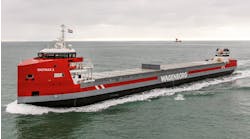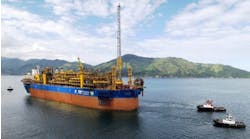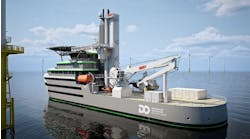Offshore staff
FALMOUTH — A consortium led by Morek Engineering has secured funding from Britain’s government to design a low-carbon installation vessel for the floating offshore wind sector.
The consortium includes Solis Marine Engineering, Tope Ocean, First Marine Solutions and Celtic Sea Power.
Morek m.d. Bob Colclough said, “This will be a first-in-class low-carbon vessel designed specifically to meet the complex installation requirements of floating offshore wind farm moorings and foundations…
“The current offshore service fleet has limited capability and capacity... Floating offshore wind needs a cost-effective solution to deliver serialized installation of huge moorings and floating foundation systems, whilst minimizing carbon emissions during the construction and maintenance of the next-generation wind farms.”
The project gained support under the Clean Maritime Demonstration Competition Round 4 (CMDC4), funded by the UK Department for Transport and delivered by Innovate UK. CMDC4 is part of the Department’s UK Shipping Office for Reducing Emissions (UK SHORE) program, which seeks to developing the technology needed to decarbonize the UK domestic maritime sector.
Tope Ocean MD Ian Godfrey said, “Greenhouse-gas emissions from offshore wind farm operation and maintenance vessels constituted more than 3% of domestic shipping emissions in the UK in 2022. With ambitious targets to develop the UK's offshore wind capacity from 14 GW in 2023 to 50 GW by 2050, this percentage share is likely to rise to well over 10%...so it is vital to pioneer a new approach to offshore service…
“The new vessel will be designed to carry out complex, high-energy construction tasks within the duty cycle constraints of future low and zero-carbon fuel systems. It will set a new standard for environmental performance associated with the construction and maintenance of floating offshore wind and the wider marine transportation sector.”
The outline vessel design will be ready for engagement with classification societies to achieve approval in principle by early 2025.
Colclough added, “An extremely wide range of mooring and foundation technologies are expected in future floating offshore wind projects around the world. So, we are undertaking a detailed stakeholder and end-user engagement process so that the design of our new vessel takes account of this and is future-proof.”
01.29.2024



